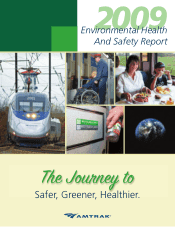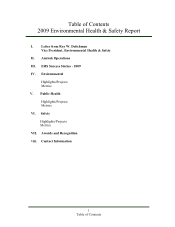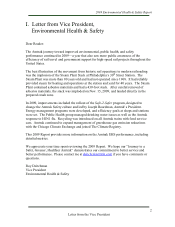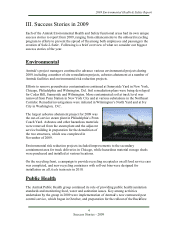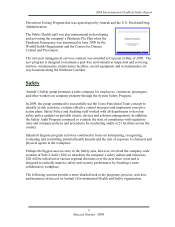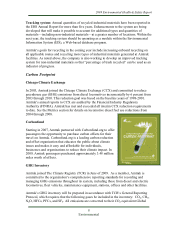Amtrak 2009 Annual Report Download - page 4
Download and view the complete annual report
Please find page 4 of the 2009 Amtrak annual report below. You can navigate through the pages in the report by either clicking on the pages listed below, or by using the keyword search tool below to find specific information within the annual report.
2009 Environmental Health & Safety Report
2
Letter from the Vice President
I. Letter from Vice President,
Environmental Health & Safety
Dear Reader:
The Amtrak journey toward improved environmental, public health, and safety
performance continued in 2009—a year that also saw more public awareness of the
efficiency of rail travel and government support for high-speed rail projects throughout the
United States.
The best illustration of the movement from historic rail operations to modern railroading
was the implosion of the Steam Plant Stack at Philadelphia’ s 30th Street Station. The
Steam Plant was more than 80 years old and had not operated since 1968. It had reliably
provided steam for heating and operations at the station and yard for 40 years. The Steam
Plant contained asbestos materials and had a 430-foot stack. After careful removal of
asbestos materials, the stack was imploded on Nov. 15, 2009, and landed directly in the
prepared crash zone.
In 2009, improvements included the rollout of the Safe-2-Safer program, designed to
change the Amtrak Safety culture and led by Joseph Boardman, Amtrak’ s President.
Energy management programs were developed, and efficiency goals at shops and stations
were set. The Public Health group managed drinking water issues as well as the Amtrak
response to H1N1 flu. Recycling was introduced on all Amtrak trains with food service
cars. Amtrak continued to expand management of greenhouse gas emission reductions
with the Chicago Climate Exchange and joined The Climate Registry.
This 2009 Report provides more information on the Amtrak EHS performance, including
detailed metrics.
We appreciate your time spent reviewing the 2009 Report. We hope our “Journey to a
Safer, Greener, Healthier Amtrak” demonstrates our commitment to better service and
better performance. Please contact me at deitchr@amtrak.com if you have comments or
questions.
Roy Deitchman
Vice President
Environmental Health & Safety

